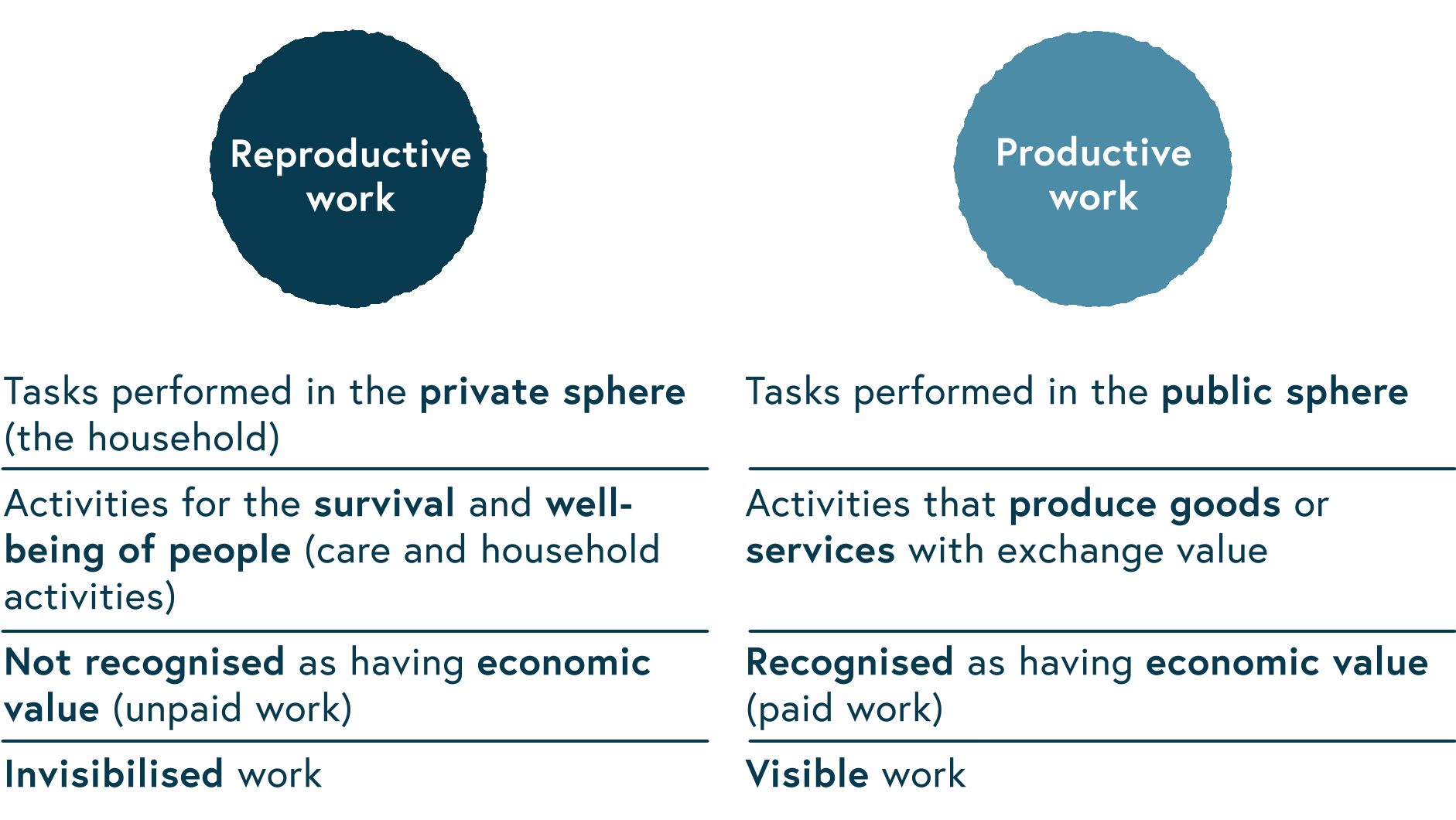DECENT WORK FOR WOMEN AND MEN IN THE GLOBAL SOUTH
1.7
The labour market: a gendered domain
To affirm that the labour market is gendered is to recognise that this institution is shaped by the gender roles, norms and relations present in society. In addition, speaking of a gendered labour market implies going beyond the classical notions that understand the labour market as a neutral institution free of gender conditioning factors.
To analyse the labour market from a gender perspective, we must first familiarise ourselves with the concept of the gender division of labour and the notions of productive and reproductive work that derive from it.
The gender division of labour consists of assigning different tasks and activities to men and women, which respond to the social roles assigned according to sex/gender. Thus, women are assigned to carry out activities in the domestic or private sphere - known as reproductive work – while men are assigned to carry out activities in the public sphere – known as productive work.

Differences between “reproductive work” and “paid work”
On the one hand, tasks related to care activities (e.g., caring for children, the sick or the elderly) and those related to the organisation and maintenance of the household (e.g., shopping, cooking or cleaning) are referred to as reproductive work. Reproductive tasks are thus oriented towards meeting household needs and are unpaid when performed in the home. In this sense, reproductive work is not only a fundamental contribution to the well-being of the family group and of society in general, but also a condition for the possibility of productive work. However, reproductive work is still a largely invisible task that lacks social and economic value.
On the other hand, tasks related to the economic, political and social life are referred to as productive work. These activities are carried out in the public sphere, a visible space historically assigned to men. Since these tasks are oriented towards the production of goods and services, they have an exchange value and are economically remunerated.
It is problematic that the conventional view of economic activity considers only salaried activities to be “real” work. These kinds of activities typically belong to the masculinised productive sphere. This means that domestic and care activities, which are highly feminised, are often not considered “work”.
This social and gendered division of labour reflects and reproduces the gender roles, relations and hierarchies present in society. It also defines certain tasks and activities as belonging to each gender and values them differently. This translates into an unequal distribution of power between femininities and masculinities.
Considering the gender dimension in the analysis of the labour market will allow us, on the one hand, to break with the dichotomous distinction between production and reproduction. We will therefore be able to understand productive and reproductive work as two moments of the same relationship, as two elements in constant interaction that cannot be dealt with separately. On the other hand, it will allow us to understand how the growing incorporation of women into the labour market - that is, their participation in paid work - has not been accompanied by an abandonment of domestic or care tasks. This means that women carry double the workload.
Likewise, bearing in mind that the labour market is not neutral but gendered, will give us the possibility to think about the particularities of women’s insertion in it. As we have seen, women’s participation in the labour market is strongly conditioned by the gender roles, norms and relations that operate in society. In conclusion, this perspective will be useful to analyse the different gaps in the world of work at the global level, such as the horizontal and vertical occupational segregation or the wage gap.
If you want to explore this topic further, you can find more reading material under the related links under this article. The resources are open access, which means that you can download them for free.
We invite you to think about situations or examples that reflect the gendered nature of the labour market.
Related links
Downloads
